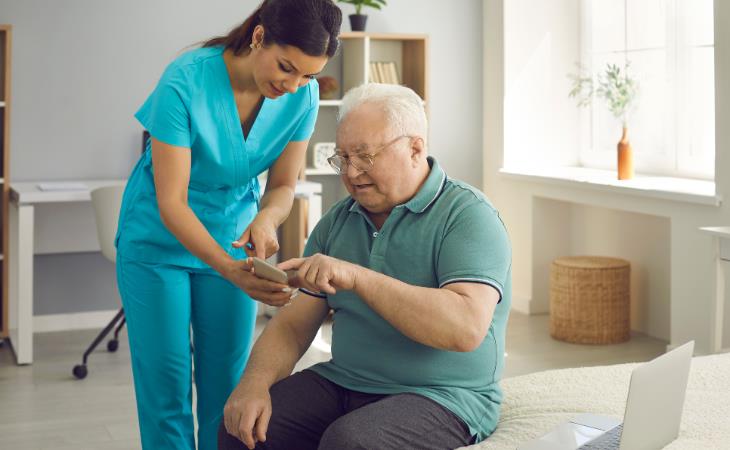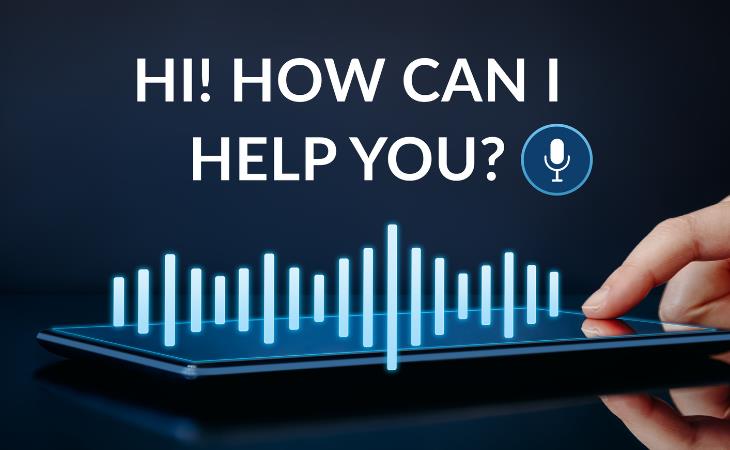Technological advancements are constantly evolving, offering new opportunities to stay connected, manage daily tasks, and explore the world around us. However, navigating modern devices like smartphones, tablets, and computers may feel overwhelming, especially for seniors.
With some guidance, however, seniors can confidently use their devices and enjoy the benefits of today's technology. If you're a senior looking to bridge the tech gap, you're in the right place! This article is packed with ten easy-to-follow tips specifically tailored to help seniors make the most out of their devices, making technology a helpful and enjoyable part of daily life.
Related: 10 Tips to Make the iPhone User-Friendly for Seniors
1. Start with the basics
Make sure you are familiar with the basic functions of your device. Learn how to turn it on and off, adjust the volume, and connect to Wi-Fi. Explore the home screen and understand the icons for essential apps like email, web browsers, and settings. Spend time practicing these basic tasks to build confidence.
Many devices have built-in tutorials and help sections, or you can find beginner guides online. Taking the time to master these fundamental skills will make it easier to use more advanced features and troubleshoot common issues.
2. Befriend voice assistants
Most mobile devices, including smartphones and tablets, are equipped with a built-in voice assistant such as Siri or Google Assistant. Consider them as your helpful companions that react to your spoken instructions. Need to dial a number? Just say "Call [name]" or "Call Mom." Curious about the current weather? Just ask, "What's the weather like today?" Lost and in need of directions? Just say, "Navigate to [location]" and your assistant will assist you. Don't hesitate! Try out different voice commands to explore all the ways your assistant can make daily tasks easier.
3. Explore accessibility features
Many devices have accessibility features that make them easier to use for the elderly. These include choices for increasing font size, enabling high-contrast settings, and using screen readers. To access these options, go to the settings menu and find the accessibility section. Explore the various options available and personalize your device to meet your specific requirements. Using these features can improve your comfort and efficiency while using your device, making it a more enjoyable experience.
4. Make the text larger
Is the text on your device's screen too tiny for you to read? No worries! Most gadgets come equipped with a built-in accessibility option known as "magnifier." This feature functions similarly to an electronic magnifying glass, making the area of the screen you interact with larger by using two or three fingers. Just double- or triple-tap the screen to increase or decrease the zoom level. This can be useful for reading news pieces, navigating websites, or reviewing medication labels. Explore your device's accessibility settings to find the magnifier feature and adjust its settings to your comfort level.
5. Utilize online resources
The internet is a treasure trove of online resources designed to help seniors master their tech. Platforms like YouTube offer a vast library of video tutorials on virtually any topic imaginable. These tutorials can be particularly helpful for the elderly, as they combine clear explanations with visual demonstrations, making it easier for them to grasp new concepts compared to written instructions alone.
6. Protect passwords and personal information
Many seniors hesitate to embrace technology due to fears of online scams and privacy breaches. This is a valid concern, as scams targeting older adults are unfortunately common. However, there are steps you can take to minimize your risk.
This includes creating strong, unique passwords for each platform you use. Understanding common scams targeting seniors empowers you to avoid them.
Be cautious with cookies, store personal information securely, and use incognito mode on public computers. Always be wary of sharing personal details, and keep sensitive information, like birth dates and social security numbers, private unless you're certain the request is legitimate.
Related: These Financial Scams Are Specifically Targeting Older Adults
7. Maintain a tech diary

Its often necessary to assimilate and retain substantial amounts of information to make effective use of technology. Maintaining a dedicated record, or "tech diary," can prove to be a valuable tool in this regard. This log can document procedural steps for newly learned processes, troubleshooting techniques for common problems, and, importantly, passwords (maintained in a secure location) for future reference.
8. Keep anti-virus software updated
Keeping your devices up-to-date is crucial for their security and smooth operation. This applies to both the operating system itself (like iOS on iPhones and iPads) and any antivirus software you might be using.
Many devices, including Apple products, are set to automatically download and install updates when they become available. This is the most convenient way to ensure you always have the latest protections. Double-check your device's settings to confirm automatic updates are enabled.
For antivirus software, updates are equally important. Some antivirus programs are free, while others require a paid subscription. If you have a paid service, make sure your subscription is current – outdated antivirus software may not be able to protect you from the latest threats.
9. Be extra careful on social media

Social media platforms offer a wonderful way for seniors to connect with loved ones, both near and far. However, it's important to be mindful of online security while enjoying its benefits. Scammers can sometimes use social media to target individuals and gain access to personal information.
Here are some key safety tips to keep in mind:
- Privacy is key: Avoid posting details like vacation schedules, phone numbers, home addresses, or pictures of your property on social media. This information can be used by scammers to target you or impersonate you to others.
- Be wary of strangers: It's best not to respond to messages from people you don't know, even if they seem urgent. Legitimate emergencies wouldn't come through social media. If you receive a message that seems concerning or suspicious, reach out to the person directly through a trusted phone number or email address.
Related: WARNING: Don't Fall for These Common Instagram Scams!
10. Keep your device updated

It's important to regularly update your device to keep it running smoothly and securely. These updates often include new features, bug fixes, and important security patches. To check for updates, go to the settings menu on your device and look for software updates. If possible, set your device to update automatically so that you don't have to remember to do it manually. Keeping your device updated ensures that you have the latest tools and protections, which can improve your overall experience and keep your personal information safe.









